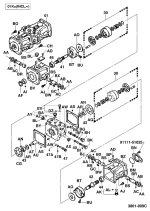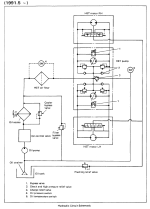Hi Everyone,
I am having a hydraulic drive problem on my 1991 Toyota 2SDK7 skid steer and I'm hoping there are some hydraulic experts on here that can help.
The skid steer is steered using the levers. Everything works fine when the unit is cold, but once it warms up, whenever you put it under even moderate load, the right lever just "gives out" and there is no drive on the right side. If you go back to neutral and start again you're good until you put moderate load on it again.
I was originally thinking pressure relief valves. There are four. I swapped them around assuming the issue would more to the left side if that was the case. Nope, still on the right side. I have changed all oils and filters as well.
Any ideas?
Thanks,
Wes
I am having a hydraulic drive problem on my 1991 Toyota 2SDK7 skid steer and I'm hoping there are some hydraulic experts on here that can help.
The skid steer is steered using the levers. Everything works fine when the unit is cold, but once it warms up, whenever you put it under even moderate load, the right lever just "gives out" and there is no drive on the right side. If you go back to neutral and start again you're good until you put moderate load on it again.
I was originally thinking pressure relief valves. There are four. I swapped them around assuming the issue would more to the left side if that was the case. Nope, still on the right side. I have changed all oils and filters as well.
Any ideas?
Thanks,
Wes



